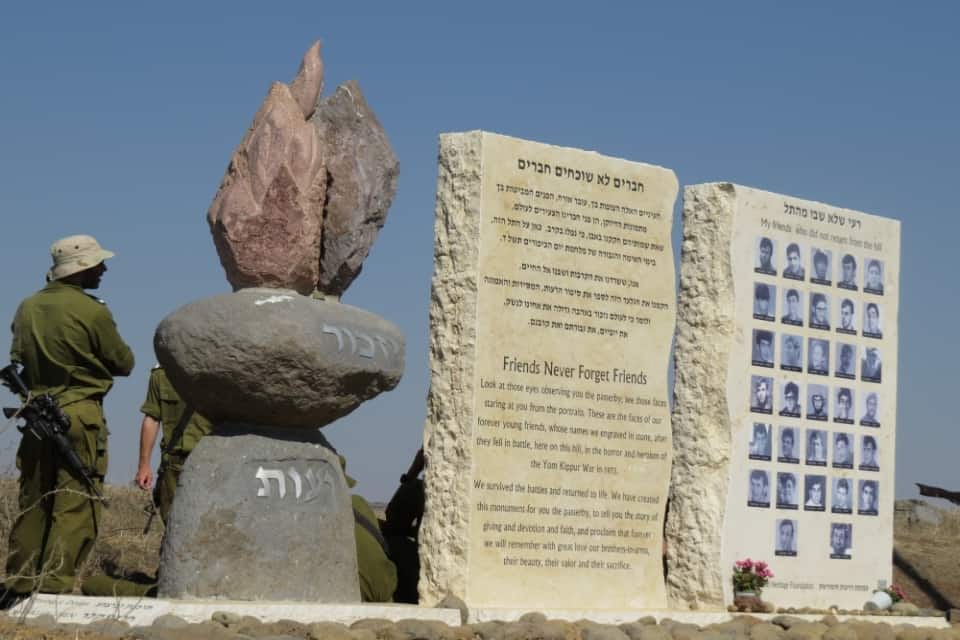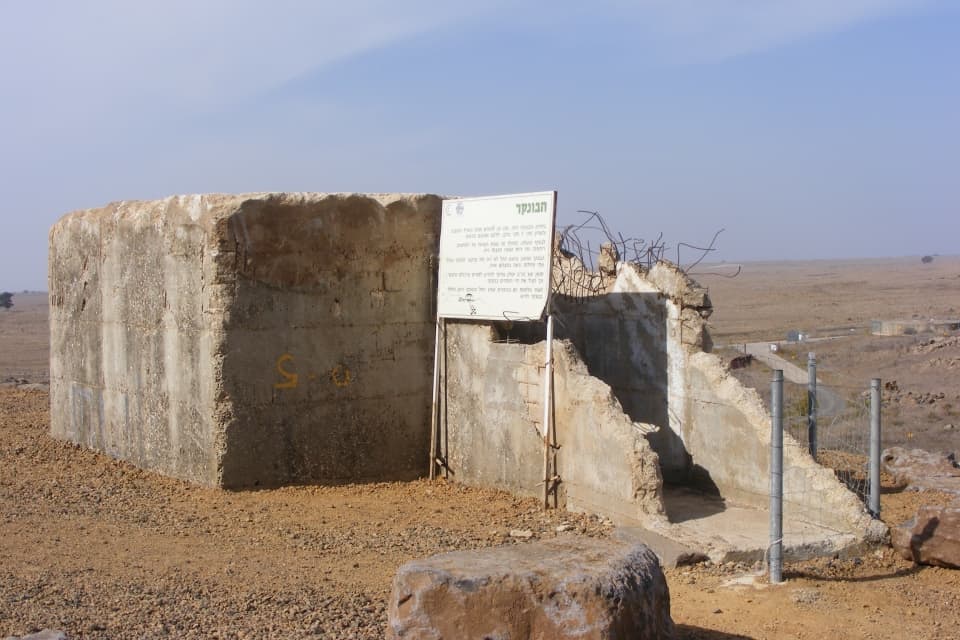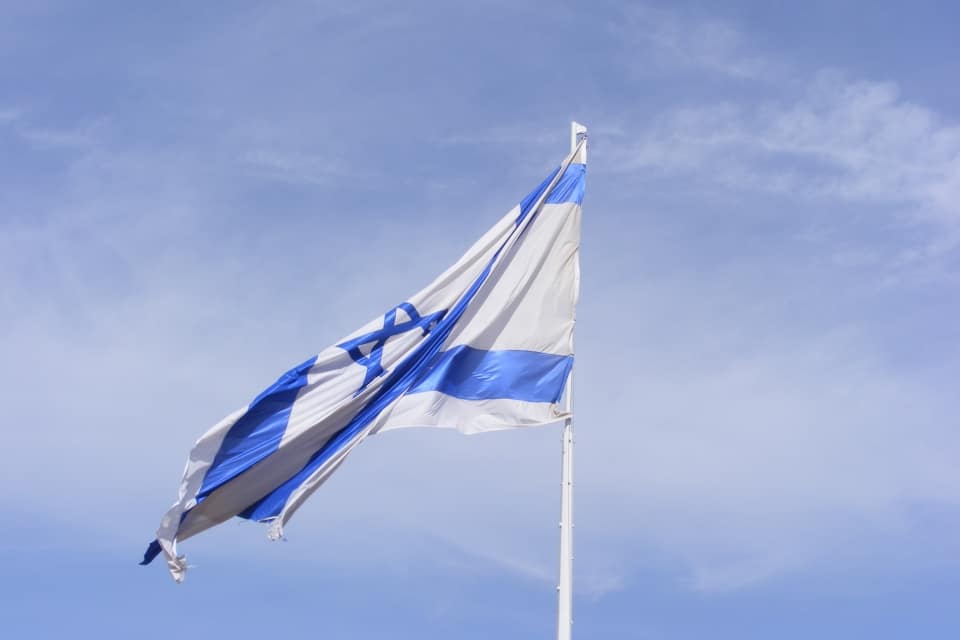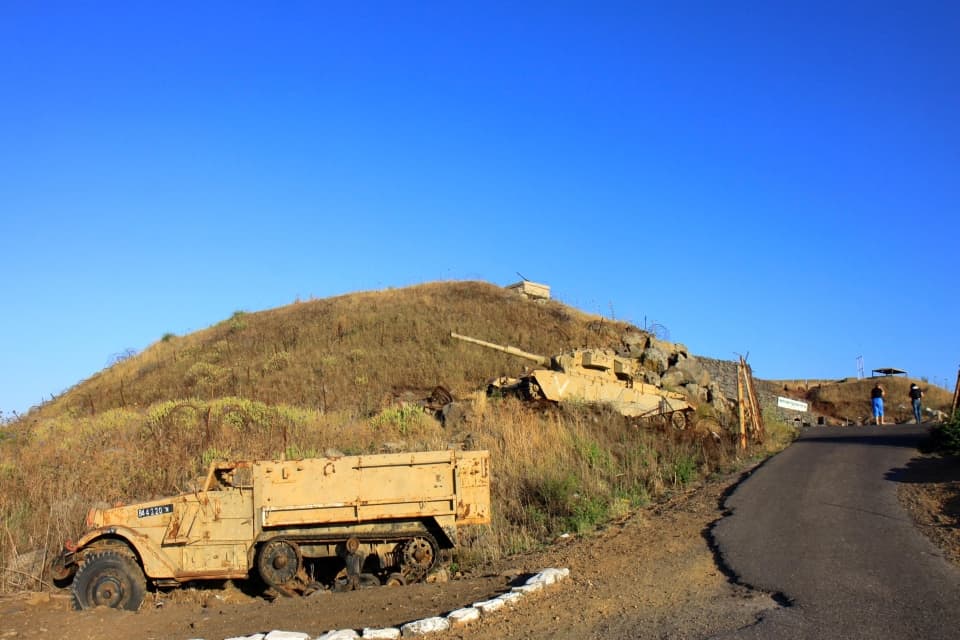About the site: In the 1973 Yom Kippur War, a bitter battle was fought here between the IDF and Syrian forces who tried to break into the village of Ramat Magshimim and the entire southern Golan Heights. On the tel are remnants of the original bunker, and a memorial to the fallen. Next to the memorial is a high flagpole with a huge flag of the State of Israel that is visible from afar.
The name: Tel Saki is Arabic for “the irrigated tel,” or “the tel that irrigates.” Some believe that the name hints at the existence of high ground water in the area, which leaves patches of green around the tel throughout the year. Others believe that in ancient times, there were water canals around the tel.
General background: Tel Saki is a dormant volcano that stands at 594 meters above sea level; from its peak, one can see the entire area between the Rokad Riverbed and Mt. Peres. Because of its strategic importance of being a natural obstacle to the possible penetration of Syrian armored forces into Israel, the IDF built a small fort here after the 1967 Six-Day War. The fort included a small above-ground bunker and a few cement protective shelters. Soldiers did not regularly hold the fort, and now and then it was used as an observation post.
The battle: On the morning of Yom Kippur in 1973, there was a general alert in the Golan Heights; a battle was expected to begin soon. Five combat soldiers and a driver were sent to the Tel Saki observation post from the 50th Battalion of the Nachal Brigade; Menachem Ansbacher commanded the squad. Just before 2:00pm that afternoon, war broke out. A heavy artillery barrage fell on all the forts of the Golan Heights, and hundreds of Syrian tanks and thousands of Syrian infantrymen broke through the border fence that separated Syria from Israel.
The commander of the 50th Battalion, Yoram Yair, sent a force of two APC’s (armored personnel carriers) with 14 soldiers to rescue the trapped soldiers on the tel, but only two of those soldiers survived. The second rescue mission also failed to break through the heavy Syrian gunfire; only five soldiers survived; they were able to return safely to the west.
At the same time, tank soldiers from the 188th and the 7th Brigades joined the soldiers on the tel, and their numbers swelled to 28. The soldiers found safety in the bunker with no supplies and almost no ammunition, but they did have radio contact, and were able to relay important intelligence to battalion headquarters.
After the bitter fighting and failed rescue attempts during the very first day of the war, Ansbacher requested an artillery barrage on the tel. The few shells that fell nearby did not help to scatter the Syrians, and he decided to retreat from the tel. A quick look outside the bunker made it clear that this was impossible; the tel was surrounded on all sides and there was no chance of rescue. The soldiers stayed in the bunker and destroyed maps and secret documents, to prevent the important information from falling into enemy hands.
The Syrians continued their attempts to capture the fort. They came up to the bunker, threw in hand grenades, and shot an RPG (rocket-propelled grenade) as well as rifle fire. Ansbacher, who was seriously wounded, told Yitzchak Nagarker to surrender to the Syrians and tell them that he was the only survivor. Nagarker left the bunker and told the Syrians that the other three IDF soldiers inside had been killed. He wore a fire-resistant tank uniform that led the Syrians to believe he was a pilot. They believed him, took him prisoner, and left the tel with him.
In the end, a third rescue team was able to reach the tel, and was surprised to find 28 surviving soldiers in the small bunker after 30 hours of fighting.
After the war, it was learned that the Syrians mistakenly thought that the area was full of large numbers of IDF soldiers, and therefore did not move south towards the Israeli villages that were in that area of the Golan Heights.












